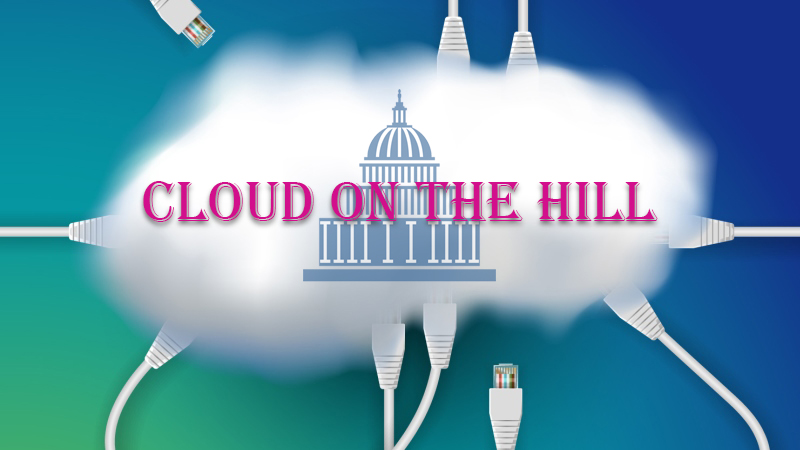Rethinking Shared Services in Government

The problems associated with an antiquated government infrastructure replete with duplication and redundancies of mission and support services have been well documented. A 2011 Government Accountability Office report discussed the operation of 661 information technology investments in human resources management alone. More recently, at my request as a staffer on the Oversight and Government Reform Committee, GAO surveyed the sorry state of Federal IT and recounted how, among many other examples, portions of our nuclear alert system were running upon an IBM Series 1 mainframe.
Federal agencies rely on decades-old, obsolete technologies to support critical mission programs, essential functions, and daily operations. Collectively, GAO reports that agencies are spending on average three-fourths of their operations and maintenance budgets keeping these legacy systems functional; some agencies are spending more than 90 percent. Costs are going through the roof; after all, where can you find qualified COBOL programmers anymore?
Agencies are reluctant to cede control over these services, even as cyber thefts of government and citizen data happen on a more frequent basis. Even where agencies do modernize, the issues with a cumbersome acquisition system and the lack of capable IT staff create unacceptable risks for CIO’s seeking to maintain critical business functions. IT Modernization has become a critical path for agencies seeking to improve their services to citizens, enhance government operations, and strengthen cybersecurity.
Many are of the view that government adoption of shared services is one answer to this problem. By consolidating common agency requirements under one roof, the thinking goes, and making those services available to other agencies to share the expense, government can focus more on mission IT and save money.
But how best to operationalize such a shared services vision? There are many challenges with this vision. One is the issue of scale. Government is an immense organization. Current shared services infrastructure cannot possibly meet the demand.
And what about competition and evolving IT? Shared services could result in “government monopolies” based upon a single platform vendor, with attendant data lock-in and lack of transparency. Locking agencies into existing technologies without a competitive process will ensure that agencies get obsolete-out-of-the-box solutions with uncompetitive pricing.
Because of these issues, the current hesitation with adopting shared services is completely understandable. In part, that hesitancy is well grounded, because it is based upon the poor results that shared services have achieved to date.
For example, how can agencies ensure they are getting competitively priced services from another government agency? In the absence of competition, and absent a common cost taxonomy across government for charge back purposes, how much should agencies be charged?
Existing shared services providers have had great difficulty highlighting savings successes due to limited cost data transparency and the absence of standardized performance benchmarks. In 2014, the Office of Management and Budget established shared services as a cross-agency priority (CAP) goal to address some of these concerns. The OMB enterprisewide shared services strategy includes such considerations as improving mission-support operations, strategic sourcing, smarter information technology delivery, and customer service.
What we need is a working and pragmatic shared services model with cost transparency and scalability. Government needs to step back from the old vision of large government owned data centers offering cookie-cutter, end-to-end monolithic shared services, such as financial management or ERP. This is a workable vision of shared service because such an approach will rarely map completely against the structure and culture of individual agencies, which often balk at having to adopt a sub-optimized solution. The private sector has already moved past this model to a more horizontal view of shared “micro-services”- called “Everything-as-a-Service” or XaaS.
Because many government IT systems running back-, mid-, and front-office processes have become hamstrung by accumulated technical debt and dependencies, a “leapfrog” strategy would allow widespread adoption of modular mini “app-like” XaaS offerings. This approach would allow agencies to reorient common business capabilities as a suite of micro-services that are chosen and tailored by each individual agency into broader, more customized agency service offerings.
Micro services would encompass more granular common IT building blocks, such as identity management, agile development, help desk, or IT asset management. Acquisition could occur using a governmentwide service catalogue, perhaps as part of the GSA Schedule.
Any agency with a specific expertise–for example, OPM for human resources; Treasury for Financial management; or VA for healthcare–could host “suites” of micro-XaaS service offerings tailored to their specific domains and using their existing resources. Agencies could choose which specific “app-like” micro-service offerings to build their own tailored “100% IT solution” using simple standardized interagency service-level agreements.
Agencies could charge for these XaaS micro-offerings using the Economy Act as a “fee for service” model, or else through interagency memorandums of understanding. XaaS would require broader adoption of open API’s, thereby expediting the goals of transparency and data sharing required by the DATA Act.
With a few technical upgrades and strategically deployed APIs, the customer service module in an agency’s ERP system that is used exclusively to support external customers could now be leveraged by other departments, as well as by IT for help-desk queries, HR for internal customers, and coordination for vendor support.
Micro-service based XaaS casts IT modernization in an entirely new light. What was primarily a technical process of IT Modernization could be transformed into a broader operational and business process “reform effort”–designed to create greater efficiencies and to engage citizen and agency employees in far more productive ways.
